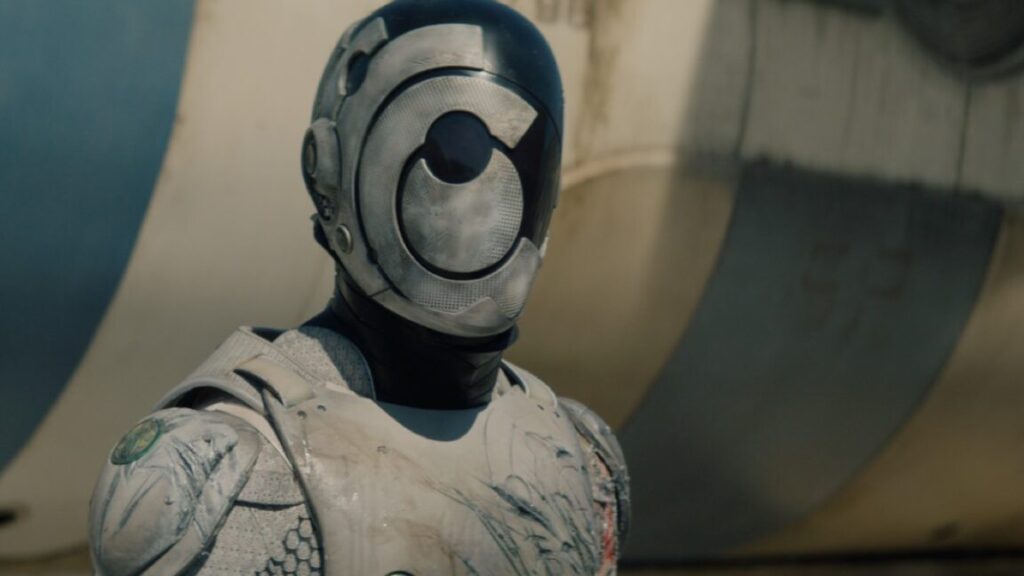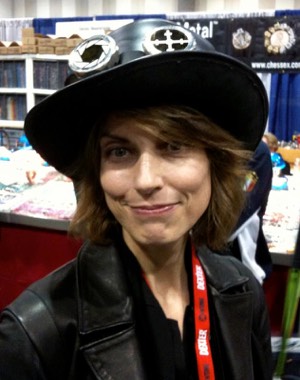The making of Apple TV’s Murderbot
Ars chats with series creators Paul and Chris Weitz about adapting Martha Wells’ book series for TV.
Built to destroy. Forced to connect. Credit: Apple TV+
In the mood for a jauntily charming sci-fi comedy dripping with wry wit and an intriguing mystery? Check out Apple TV’s Murderbot, based on Martha Wells’ bestselling series of novels The Murderbot Diaries. It stars Alexander Skarsgård as the titular Murderbot, a rogue cyborg security (SEC) unit that gains autonomy and must learn to interact with humans while hiding its new capabilities.
(Some minor spoilers below, but no major reveals.)
There are seven books in Wells’ series thus far. All are narrated by Murderbot, who is technically owned by a megacorporation but manages to hack and override its governor module. Rather than rising up and killing its former masters, Murderbot just goes about performing its security work, relieving the boredom by watching a lot of entertainment media; its favorite is a soap opera called The Rise and Fall of Sanctuary Moon.
Murderbot the TV series adapts the first book in the series, All Systems Red. Murderbot is on assignment on a distant planet, protecting a team of scientists who hail from a “freehold.” Mensah (Noma Dumezweni) is the team leader. The team also includes Bharadwaj (Tamara Podemski) and Gurathin (David Dastmalchian), who is an augmented human plugged into the same data feeds as Murderbot (processing at a much slower rate). Pin-Lee (Sabrina Wu) also serves as the team’s legal counsel; they are in a relationship with Arada (Tattiawna Jones), eventually becoming a throuple with Ratthi (Akshay Khanna).
As in the books, Murderbot is the central narrator, regaling us with his observations of the humans with their silly ways and discomfiting outbursts of emotion. Mensah and her fellow scientists were forced to rent a SEC unit to get the insurance they needed for their mission, and they opted for the cheaper, older model, unaware that it had free will. This turns out to be a good investment when Murderbot rescues Bharadwaj from being eaten by a giant alien worm monster—losing a chunk of its own torso in the process.
However, it makes a tactical error when it shows its human-like face to Ratthi, who is paralyzed by shock and terror, making small talk to get everyone back to safety. This rouses Gurathin’s suspicions, but the rest of the team can’t help but view Murderbot differently—as a sentient being rather than a killing machine—much to Murderbot’s dismay. Can it keep its free will a secret and avoid being melted down in acid while helping the scientists figure out why there are mysterious gaps in their survey maps? And will the scientists succeed in their attempts to “humanize” their SEC unit?
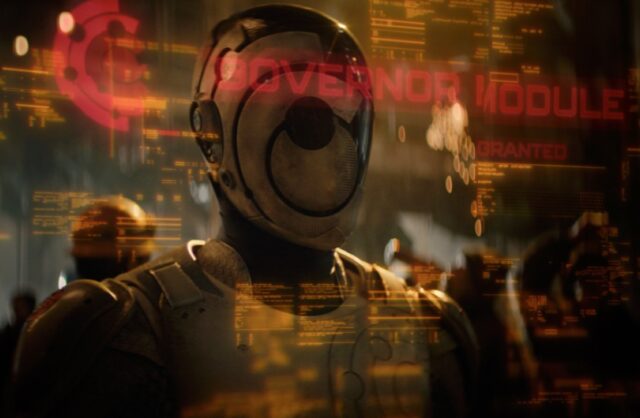
Murderbot figured out how to hack its “governor module.”
The task of adapting Wells’ novella for TV fell to sibling co-creators Paul Weitz (Little Fockers, Bel Canto) and Chris Weitz (The Golden Compass, Rogue One), whose shared credits include Antz, American Pie, and About A Boy. (Wells herself was a consulting producer.) They’ve kept most of the storyline intact, fleshing out characters and punching up the humor a bit, even recreating campy scenes from The Rise and Fall of Sanctuary Moon—John Cho and Clark Gregg make cameos as the stars of that fictional show-within-a-show.
Ars caught up with Paul and Chris Weitz to learn more about the making of Murderbot.
Ars Technica: What drew you to this project?
Chris Weitz: It’s a great central character, kind of a literary character that felt really rare and strong. The fact that we both liked the books equally was a big factor as well.
Paul Weitz: The first book, All Systems Red, had a really beautiful ending. And it had a theme that personhood is irreducible. The idea that, even with this central character you think you get to know so well, you can’t reduce it to ways that you think it’s going to behave—and you shouldn’t. The idea that other people exist and that they shouldn’t be put into whatever box you want to put them into felt like something that was comforting to have in one’s pocket. If you’re going to spend so much time adapting something, it’s really great if it’s not only fun but is about something.
It was very reassuring to be working with Martha Wells on it because she was very generous with her time. The novella’s quite spare, so even though we didn’t want to cut anything, we wanted to add some things. Why is Gurathin the way that he is? Why is he so suspicious of Murderbot? What is his personal story? And with Mensah, for instance, the idea that, yes, she’s this incredibly worthy character who’s taking on all this responsibility on her shoulders, but she also has panic attacks. That’s something that’s added, but we asked Martha, “Is it OK if we make Mensah have some panic attacks?” And she’s like, “Oh, that’s interesting. I kind of like that idea.” So that made it less alarming to adapt it.
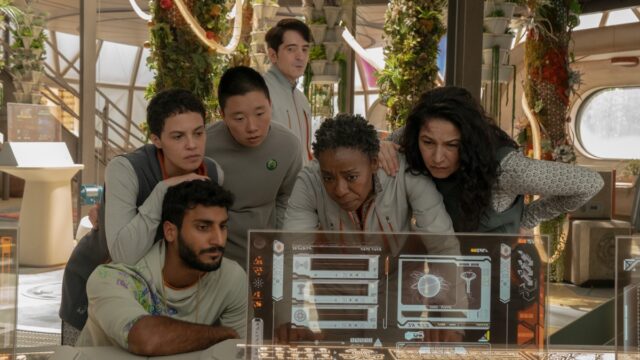
Murderbot’s clients: a group of scientists exploring the resources of what turns out to be a very dangerous planet. Credit: Apple TV+
Ars Technica: You do play up the humorous aspects, but there is definitely humor in the books.
Chris Weitz: A lot of great science fiction is very, very serious without much to laugh at. In Martha’s world, not only is there a psychological realism in the sense that people can have PTSD when they are involved in violence, but also people have a sense of humor and funny things happen, which is inherently what happens when people get together. I was going to say it’s a human comedy, but actually, Murderbot is not human—but still a person.
Ars Technica: Murderbot’s favorite soap opera, The Rise and Fall of Sanctuary Moon, is merely mentioned in passing in the book, but you’ve fleshed it out as a show-within-the-show.
Chris Weitz: We just take our more over-the-top instincts and throw it to that. Because it’s not as though we think that Sanctuary Moon is bad.
Ars Technica: As Murderbot says, it’s quality entertainment!
Chris Weitz: It’s just a more unhinged form of storytelling. A lot of the stuff that the bot says in Sanctuary Moon is just goofy lines that we could have given to Murderbot in a situation like that. So we’re sort of delineating what the show isn’t. At the same time, it’s really fun to indulge your worst instincts, your most guilty pleasure kind of instincts. I think that was true for the actors who came to perform it as well.
Paul Weitz: Weirdly, you can state some things that you wouldn’t necessarily in a real show when DeWanda Wise’s character, who’s a navigation bot, says, “I’m a navigation unit, not a sex bot.” I’m sure there are many people who have felt like that. Also, to delineate it visually, the actors were in a gigantic stage with pre-made visuals around them, whereas most of the stuff [for Murderbot] was practical things that had been built.
Ars Technica: In your series, Murderbot is basically a Ken doll with no genitals. The book only mentioned that Murderbot has no interest in sex. But the question of what’s under the hood, so to speak, is an obvious one that one character in particular rather obsesses over.
Chris Weitz: It’s not really addressed in the book, but certainly, Murderbot, in this show as well, has absolutely no interest in romance or sex or love. This was a personable way to point it out. There was a question of, once you’ve got Alexander in this role, hasn’t anybody noticed what it looks like? And also, the sort of exploitation that bot constructs are subjected to in this world that Martha has created meant that someone was probably going to treat it like an object at some point.
Paul Weitz: I also think, both of us having kids, you get a little more exposed to ways of thinking that imply that the way that we were brought up thinking of romance and sexuality and gender is not all there is to it and that, possibly, in the future, it’s not going to be so strange, this idea that one can be either asexual or—
Chris Weitz: A-romantic. I think that Murderbot, among neurodivergent communities and a-romantic, asexual communities, it’s a character that people feel they can identify with—even people who have social anxiety like myself or people who think that human beings can be annoying, which is pretty much everyone at some point or another.
Ars Technica: It’s interesting you mentioned neurodivergence. I would hesitate to draw a direct comparison because it’s a huge spectrum, but there are elements of Murderbot that seem to echo autistic traits to some degree.
Paul Weitz: People look at something like the autism spectrum, and they inadvertently erase the individuality of people who might be on that spectrum because everybody has a very particular experience of life. Martha Wells has been quoted as saying that in writing Murderbot, she realized that there are certain aspects of herself that might be neurodivergent. So that kind of gives one license to discuss the character in a certain way.
That’s one giant and hungry worm monster. Apple TV+
Chris Weitz: I don’t think it’s a direct analogy in any way, but I can understand why people from various areas on the spectrum can identify with that.
Paul Weitz: I think one thing that one can identify with is somebody telling you that you should not be the way you are, you should be a different way, and that’s something that Murderbot doesn’t like nor do.
Ars Technica: You said earlier, it’s not human, but a person. That’s a very interesting delineation. What are your thoughts on the personhood of Murderbot?
Chris Weitz: This is the contention that you can be a person without being a human. I think we’re going to be grappling with this issue the moment that artificial general intelligence comes into being. I think that Martha, throughout the series, brings up different kinds of sentients and different kinds of personhood that aren’t standard human issue. It’s a really fascinating subject because it is our future in part, learning how to get along with intelligences that aren’t human.
Paul Weitz: There was a New York Times journalist a couple of years ago who interviewed a chatbot—
Chris Weitz: It was Kevin Roose, and it was Sydney the Chatbot. [Editor: It was an AI chatbot added to Microsoft’s Bing search engine, dubbed Sydney by Roose.]
Paul Weitz: Right. During the course of the interview, the chatbot told the journalist to leave his wife and be with it, and that he was making a terrible mistake. The emotions were so all over the place and so specific and quirky and slightly scary, but also very, very recognizable. Shortly thereafter, Microsoft shut down the ability to talk with that chatbot. But I think that somewhere in our future, general intelligences are these sort of messy emotions and weird sort of unique personalities. And it does seem like something where we should entertain the thought that, yeah, we better treat everyone as a person.
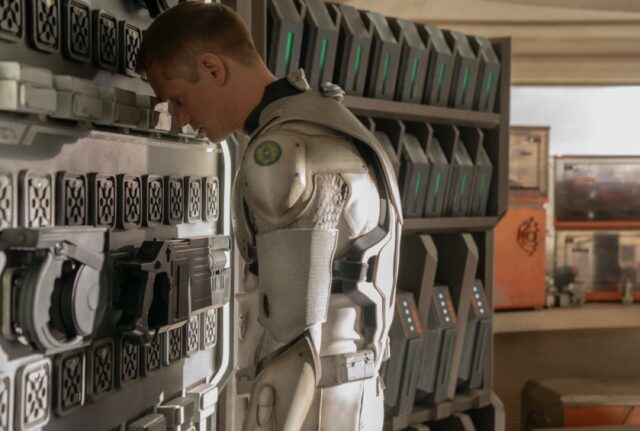
Murderbot isn’t human, but it is a person. Credit: Apple TV+
Ars Technica: There’s this Renaissance concept called sprezzatura—essentially making a difficult thing look easy. The series is so breezy and fun, the pacing is perfect, the finale is so moving. But I know it wasn’t easy to pull that off. What were your biggest challenges in making it work?
Chris Weitz: First, can I say that that is one of my favorite words in the world, and I think about it all the time. I remember trying to express this to people I’ve been working on movies with, a sense of sprezzatura. It’s like it is the duck’s legs moving underneath the water. It was a good decision to make this a half-hour series so you didn’t have a lot of meetings about what had just happened in the show inside of the show or figuring out why things were the way they were. We didn’t have to pad things and stretch them out.
It allowed us to feel like things were sort of tossed off. You can’t toss off anything, really, in science fiction because there’s going to be special effects, visual effects. You need really good teams that can roll with moving the camera in a natural way, reacting to the way that the characters are behaving in the environment. And they can fix things.
Paul Weitz: They have your back.
Chris Weitz: Yeah. Really great, hard work on behalf of a bunch of departments to make things feel like they’re just sort of happening and we’ve got a camera on it, as opposed to being very carefully laid out.
Paul Weitz: And a lot of it is trusting people and trusting their creativity, trying to create an environment where you’ve articulated what you’re after, but you don’t think their job better than they do. You’re giving notes, but people are having a sense of playfulness and fun as they’re doing the visual effects, as they’re coming up with the graphics, as they’re acting, as they’re doing pretty much anything. And creating a good vibe on the set. Because sometimes, the stress of making something sucks some of the joy out of it. The antidote to that is really to trust your collaborators.
Ars Technica: So what was your favorite moment in the series?
Paul Weitz: I’d say the tenth episode, for me, just because it’s been a slow burn. There’s been enough work put into the characters—for instance, David Dastmalchian’s character—and we haven’t played certain cards that we could have played, so there can be emotional import without telegraphing it too much. Our ending stays true to the book, and that’s really beautiful.
Chris Weitz: I can tell you my worst moment, which is the single worst weather day I’ve ever experienced in a quarry in Ontario where we had hail, rain, snow, and wind—so much so that our big, long camera crane just couldn’t function. Some of the best moments were stuff that had nothing to do with visual effects or CGI—just moments of comedy in between the team members, that only exist within the context of the cast that we brought together.
Paul Weitz: And the fact that they loved each other so much. They’re very different people from each other, but they really did genuinely bond.
Ars Technica: I’m going to boldly hope that there’s going to be a second season because there are more novels to adapt. Are you already thinking about season two?
Paul Weitz: We’re trying not to think about that too much; we’d love it if there was.
Chris Weitz: We’re very jinxy about that kind of stuff. So we’ve thought in sort of general ways. There’s some great locations and characters that start to get introduced [in later books], like Art, who’s an AI ship. We’re likely not to make it one season per book anymore, we’d do a mashup of the material that we have available to us. We’re going to have to sit with Martha and figure out how that works if we are lucky enough to get renewed.
New episodes of Murderbot release every Friday on Apple TV+ through July 11, 2025. You should definitely be watching.
Jennifer is a senior writer at Ars Technica with a particular focus on where science meets culture, covering everything from physics and related interdisciplinary topics to her favorite films and TV series. Jennifer lives in Baltimore with her spouse, physicist Sean M. Carroll, and their two cats, Ariel and Caliban.
The making of Apple TV’s Murderbot Read More »
